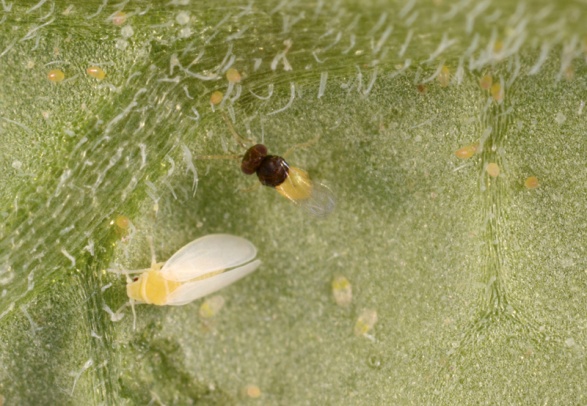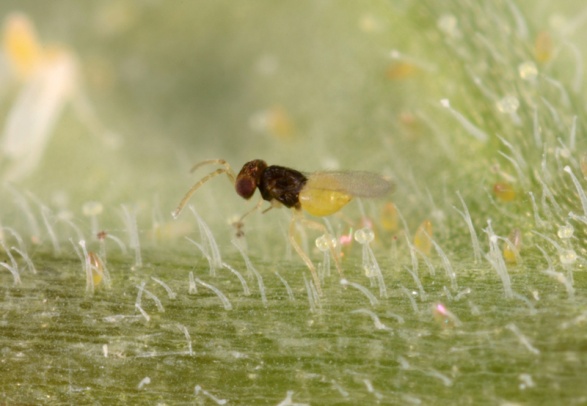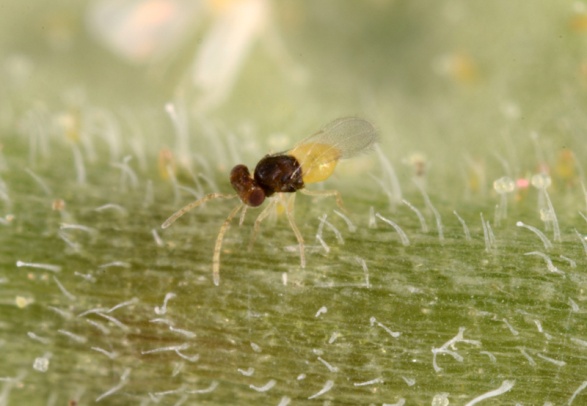
Encarsia formosa Gahan
(Insecta: Hymenoptera: Aphelinidae)
Encarsia formosa is an effective endoparasitoid of whiteflies, particularly sweetpotato whitefly, Bemisia tabaci (Gennadius), and greenhouse whitefly, Trialeurodes vaporarium (Westwood).
Female wasps are less than a millimeter long. They have a dark brown head and thorax, a yellow abdomen, antennae and legs, and transparent wings.
Into host nymphs, female wasps lay fertilized, diploid eggs that develop into female wasps. Unfertilized eggs that develop into male wasps usually live as parasites on their own species. Each female may parasitize roughly 420 hosts and kill an additional 100 hosts by feeding on them. The wasp larva completes four instars inside the host before pupating and emerging as adult.
Encarsia formosa with New World origin is widespread in the United States and has been introduced into many countries worldwide as a biocontrol agent of whiteflies.
Images
To save the Web-optimized images shown below to your hard drive:
PC users: right click to "Save Picture (or Image) As..."
Mac users: click and drag to your desktop.

Adult Encarsia formosa Gahan (top) with adult (bottom left) and first instars (bottom right) of sweetpotato whitefly, Bemisia tabaci
(Photographer: Lyle Buss, University of Florida)

Lateral view of adult Encarsia formosa Gahan examining a leaf infested with sweetpotato whitefly, Bemisia tabaci, eggs
(Photographer: Lyle Buss, University of Florida)

Dorsolateral view of adult Encarsia formosa Gahan
(Photographer: Lyle Buss, University of Florida)